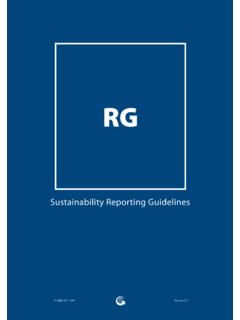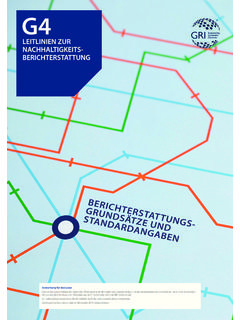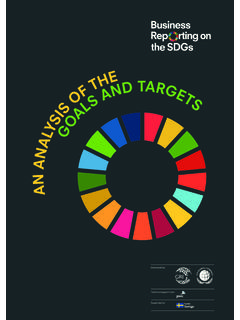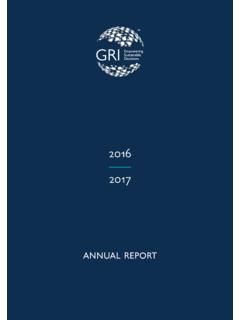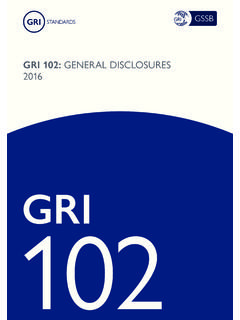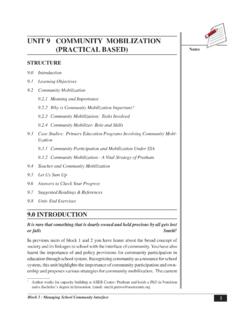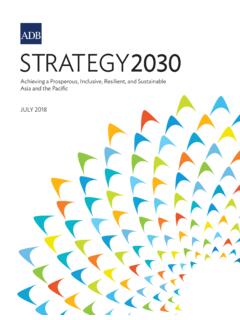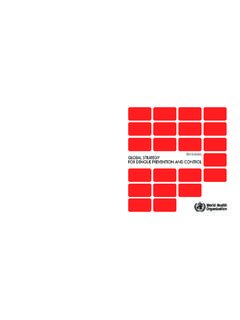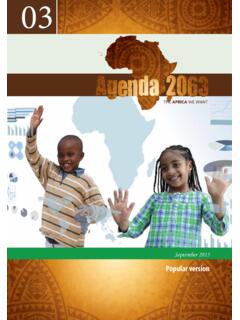Transcription of GRI 207: TAX 2019 - Global Reporting Initiative
1 1 GRI 207: Tax 2019 GRI 207: TA X2019 GRI2072 GRI 207: Tax 2019 Introduction 3 GRI 207: Tax 51. Management approach disclosures 5 Disclosure 207-1 Approach to tax 6 Disclosure 207-2 Tax governance, control, and risk management 7 Disclosure 207-3 Stakeholder engagement and management of concerns related to tax 92. Topic-specific disclosures 10 Disclosure 207-4 Country-by-country Reporting 10 Glossary 14 References 16 About this Standard ResponsibilityThis Standard is issued by the Global Sustainability Standards Board (GSSB). Any feedback on the GRI Standards can be submitted to for the consideration of the 207: Tax sets out Reporting requirements on the topic of tax.
2 This Standard can be used by an organization of any size, type, sector or geographic location that wants to report on its impacts related to this referencesThis Standard is to be used together with the most recent versions of the following documents:GRI 101: Foundation GRI 103: Management Approach GRI Standards GlossaryIn the text of this Standard, terms defined in the Glossary are dateThis Standard is effective for reports or other materials published on or after 1 January 2021. Earlier adoption is : This document includes hyperlinks to other Standards. In most browsers, using ctrl + click will open external links in a new browser window.
3 After clicking on a link, use alt + left arrow to return to the previous 207: Tax 2019A. OverviewThis Standard is part of the set of GRI Sustainability Reporting Standards (GRI Standards). The Standards are designed to be used by organizations to report about their impacts on the economy, the environment, and society. The GRI Standards are structured as a set of interrelated, modular standards. The full set can be downloaded at are three universal Standards that apply to every organization preparing a sustainability report: GRI 101: Foundation GRI 102: General Disclosures GRI 103: Management ApproachGRI 101: Foundation is the starting point for using the GRI Standards.
4 It has essential information on how to use and reference the Standards. Figure 1 Overview of the set of GRI StandardsGRI 103 GRI 102 Topic-specificStandardsUniversal StandardsStarting point for using the GRI StandardsGRI 101 FoundationGeneral DisclosuresManagement ApproachTo report contextual information about an organizationTo report the management approach for each material topicSelect from these to report specific disclosures for each material topicGRI 300 EnvironmentalGRI 400 SocialGRI 200 EconomicAn organization then selects from the set of topic-specific GRI Standards for Reporting on its material the Reporting Principles for defining report content in GRI 101.
5 Foundation for more information on how to identify material topic-specific GRI Standards are organized into three series: 200 (Economic topics), 300 (Environmental topics), and 400 (Social topics). Each topic-specific Standard includes disclosures specific to that topic, and is designed to be used together with GRI 103: Management Approach, which is used to report the management approach for the topic. GRI 207: Tax is a topic-specific GRI Standard in the 200 series (Economic topics).B. Using the GRI Standards and making claimsThere are two basic approaches for using the GRI Standards. For each way of using the Standards there is a corresponding claim, or statement of use, which an organization is required to include in any published The GRI Standards can be used as a set to prepare a sustainability report that is in accordance with the Standards.
6 There are two options for preparing a report in accordance (Core or Comprehensive), depending on the extent of disclosures included in the report. An organization preparing a report in accordance with the GRI Standards uses this Standard, GRI 207: Tax, if this is one of its material Selected GRI Standards, or parts of their content, can also be used to report specific information, without preparing a report in accordance with the Standards. Any published materials that use the GRI Standards in this way are to include a GRI-referenced claim. See Section 3 of GRI 101: Foundation for more information on how to use the GRI Standards, and the specific claims that organizations are required to include in any published 207: Tax 2019 Reasons for omission as set out in GRI 101: Foundation are applicable to this Standard.
7 See clause in GRI 101 for requirements on reasons for Requirements, recommendations and guidanceThe GRI Standards include:Requirements. These are mandatory instructions. In the text, requirements are presented in bold font and indicated with the word shall . Requirements are to be read in the context of recommendations and guidance; however, the organization is not required to comply with recommendations or guidance in order to claim that a report has been prepared in accordance with the These are cases where a particular course of action is encouraged, but not required. In the text, the word should indicates a These sections include background information, explanations, and examples to help organizations better understand the organization is required to comply with all applicable requirements in order to claim that its report has been prepared in accordance with the GRI Standards.
8 See GRI 101: Foundation for more information. D. Background contextIn the context of the GRI Standards, the economic dimension of sustainability concerns an organization s impacts on the economic conditions of its stakeholders, and on economic systems at local, national, and Global levels. It does not focus on the financial condition of an Standards in the Economic series (200) address the flow of capital among different stakeholders, and the main economic impacts of an organization throughout 207 addresses the topic of are important sources of government revenue and are central to the fiscal policy and macroeconomic stability of are acknowledged by the United Nations to play a vital role in achieving the Sustainable Development They are also a key mechanism by which organizations contribute to the economies of the countries in which they paid by an organization reflect that profitability depends on many factors external to the organization, including access to workers.
9 Markets, public infrastructure and services, natural resources, and a public administration. Organizations have an obligation to comply with tax legislation, and a responsibility to their stakeholders to meet expectations of good tax practices. If organizations seek to minimize their tax obligation in a jurisdiction, they might deprive the government of revenue. This could lead to reduced investment in public infrastructure and services, increase in government debt, or shifting of the tax obligation onto other tax of tax avoidance by an organization could also undermine tax compliance more broadly, by driving other organizations to engage in aggressive tax planning based on the view that they might otherwise be at a competitive disadvantage.
10 This can lead to increasing costs associated with tax regulation and Reporting on tax increases transparency and promotes trust and credibility in the tax practices of organizations and in the tax systems. It enables stakeholders to make informed judgments about an organization s tax positions. Tax transparency also informs public debate and supports the development of socially desirable tax disclosures in this Standard are designed to help an organization understand and communicate its management approach in relation to tax, and to report its revenue, tax, and business activities on a country-by-country reportingCountry-by-country Reporting involves the Reporting of financial, economic, and tax-related information for each jurisdiction in which an organization operates.
